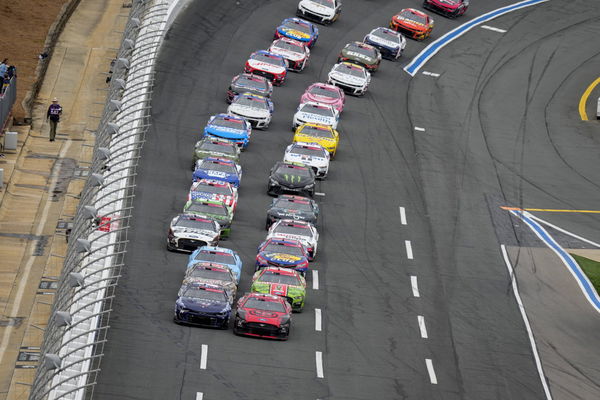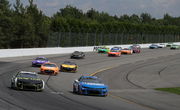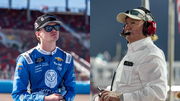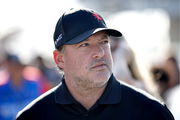
via Imago
NASCAR, Motorsport, USA Coca-Cola 600 May 29, 2023 Concord, North Carolina, USA Grid readies for a restart out of turn four during the Coca-Cola 600 at Charlotte Motor Speedway. Concord Charlotte Motor Speedway North Carolina USA, EDITORIAL USE ONLY PUBLICATIONxINxGERxSUIxAUTxONLY Copyright: xJimxDedmonx 20230529_neb_db2_279 | Image Credit: Imago

via Imago
NASCAR, Motorsport, USA Coca-Cola 600 May 29, 2023 Concord, North Carolina, USA Grid readies for a restart out of turn four during the Coca-Cola 600 at Charlotte Motor Speedway. Concord Charlotte Motor Speedway North Carolina USA, EDITORIAL USE ONLY PUBLICATIONxINxGERxSUIxAUTxONLY Copyright: xJimxDedmonx 20230529_neb_db2_279 | Image Credit: Imago
For the 2024 NASCAR Cup season, the sport will be debuting a brand new qualifying format. Of course, some things have stayed the same, like splitting the 36-strong field into two groups, and the fastest five drivers from each group advancing to the Top 10 shootout. However, everyone from P11 onwards will be classified differently for the main race. Admittedly, the Daytona 500 has its own qualifying format, but the other races will see the change.
What qualifying changes are in place for the NASCAR Cup Series?
In a nutshell, the cars in Group A, that fail to reach the second round (or top 10) will line up on the outside row. Meanwhile, the cars in group B will line up on the inside row. However, when the paddock heads to superspeedways, there is no group qualifying, but there will be two rounds. In the opening round, the fastest 10 drivers will move on to the next round.
ADVERTISEMENT
Article continues below this ad

USA Today via Reuters
Sep 16, 2023; Bristol, Tennessee, USA; NASCAR Cup Series driver William Byron (24) and driver Martin Truex Jr. (19) and driver Alex Bowman (48) during the Bass Pro Shops Night Race at Bristol Motor Speedway. Mandatory Credit: Randy Sartin-USA TODAY Sports
Of course, this was not something that was dreamed up out of the blue. NASCAR officials worked alongside people from the industry, and with their input, they came to this conclusion. As it happens, track conditions can change throughout a qualifying session. Owing to this, the conditions can favor one group more than the other. Another important change is the return of wet tires on road courses, mile-long ovals and short tracks.
This appears to be a good thing for the sport, as it makes it easier to understand. Additionally, it could also lead to some very tactical decisions from the NASCAR teams. Especially since getting the outside or inside line could be very important during the race. The lanes are crucial because NASCAR drivers depend on draft from their opponents and teammates. Furthermore, any of the lanes could be advantageous during the race start or the restarts.
ADVERTISEMENT
Article continues below this ad
WATCH THIS STORY: NASCAR Might Have Just Saved Themselves With the $7.7 Billion Media Rights Deal
Trending
Why is the new change will be a positive one for the stock car racing series?
Interestingly, some criteria decide the two groups. Not counting the Daytona 500, the two groups are decided based on the previous race. First and foremost, 5% depends on the fastest lap time position, 25% on a driver’s finishing position in the last race. Aside from that, 25% depends on the team owner’s finishing position in the previous race, and finally, 35% is based on the owner’s points position.
ADVERTISEMENT
Article continues below this ad
Previously, fans were forced to wait for both rounds to conclude before they could find out who started where. Over here, they would have to compare lap times between both rounds and calculate where their favorite driver started. With the new qualifying system, it will be easier to figure out the line-up. For example, the sixth-place driver in Group A will start in 11th place, while the sixth-place driver in Group B will start in 12th.
ADVERTISEMENT
ADVERTISEMENT
ADVERTISEMENT
ADVERTISEMENT






